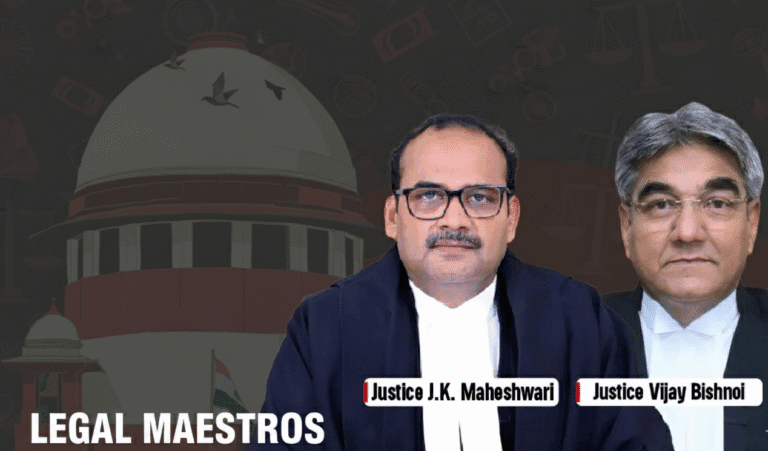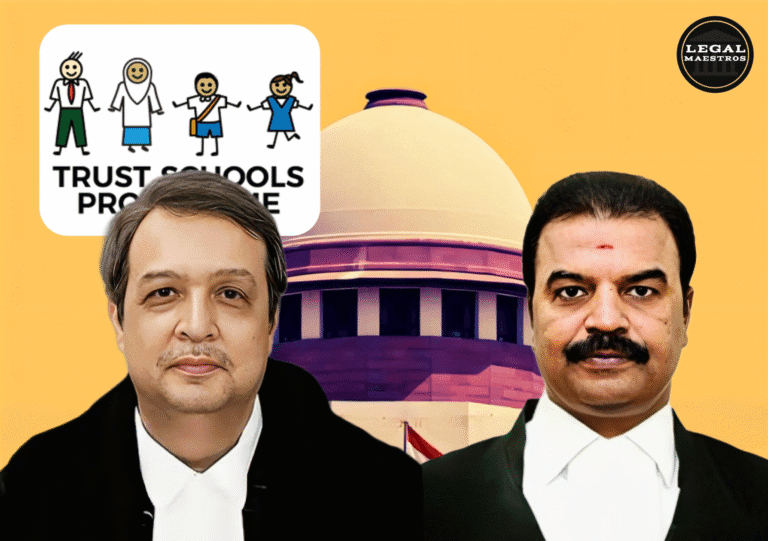
Portion of a July 16, 2025 Supreme Court of India decision in an appeal examined by Birka Shiva versus The State of Telangana, the Supreme Court reversed the death verdict of an earlier convicted rapist, kidnapper, and false imprisoner. Its decision by the apex court depended on some crucial legal provisions, with regard to the evidentiary value of the age of the victim, ingredients needed to prove a case of kidnapping and confinement, and concise element of consent in rape cases. This case, known in the record as 2025 INSC 863, is a valuable remedial ruling on the onus of the burden of the prosecution in cases involving criminal offenses.
Short details of the Case
The case had arisen due to a complaint put forward by the mother of the victim on August 8, 2012, who had recalled that her daughter had gone missing since August 4, 2012. As pleaded by the prosecution, the appellant Birka Shiva, who was the friend of the brother of the victim, induced the victim to go to Hyderabad whereby he wrapped a canvassed rope known as pasupukommu over the neck of the victim making it look like the victim is engaged in marriage. Then allegedly he locked her in a room in a locality in Shadnagar at Hyderabad where they stayed together, and he forced his way over her through sexual intercourse. After the motorcycle accident that sustained injuries to the appellant on October 12, 2012, the victim went to her mother and the victim narrated her experience. Then there were section 342 (wrongful confinement), section 376 (rape), and section 366 (kidnapping, abducting or causing, woman, to be forced to marry etc..) which came along with the FIR. The Trial Court convicted the appellant on the offence of kidnapping under Section 363 of the IPC, charge of using trick or any deception under Section 342 of the IPC and rape under Section 376 of the IPC. High Court of Telangana has confirmed the convictions but remitted the sentences. This contributed to the appellant appealing his conviction and sentence in front of the Supreme Court.
Age of the Victim: A Binding Data: Age of the victim plays a critical role in the direction of a case study.
Among the major problems that the Supreme Court had to consider was whether the prosecution had proven beyond reasonable doubt that the victim on date of alleged unfoldment, August 4, 2012, was under sixteen/eighteen years of age. The prosecution majorly depended on a birth certificate (Ex.P11) which was issued by the Zilla Parishad High School that showed the date of birth of the victim to be November 3, 1996 which rendered her an approximation of 15 years and 9months at the time of occurrence of the offense.
For any queries or to publish an article or post or advertisement on our platform, do call at +91 6377460764 or email us at contact@legalmaestros.com.
But, Supreme Court was very keen in the evidentiary work of such a document. Although the entries in public or official registers are admissible under Section 35 of the Indian Evidence Act 1872, the probative value of the same rests upon the authentication of the entries and authenticity of the source of underlying information. It is not admissible to prove contents of a document merely by displaying that document itself. The Court referred to some precedents such as:
Birad Mal Singhvi v. Anand Purohit, that, school register entries are not probative until the person making such entry or giving the date of birth in the register has been examined.
Here, it was only during the process of cross-examining him, the Headmaster (PW-13) confessed that he had no first hand information regarding the source or foundations of the date of birth as recorded. Moreover, the prosecution did not bother to analyze the person making an entry in the admission register or to give the primary school register to testify the age. More importantly, the victim (her mother and brothers) and her family did not mention her age directly, in the depositions. It also discovered that the Investigating Officers were interestingly quiet concerning the age of the victim. The Court also came to the conclusion that birth certificate (Ex.P11) was not made more than just with enough corroboration, and, therefore, could not be used to be definitely reliable to establish the age of a victim.
Lawful Guardianship and Wrongful Confinement
The Court also entered into the accusations of kidnapping under the section 363 IPC and wrongful confinement under the section 342 IPC. It was claimed that the appellant had deceived the victim toward abandoning her legitimate guardian and unwarrantedly enclosed her.
But just the facts that were shown portrayed a different panel. There was no dispute that the appellant was habitual visitor in the parental home of the victim and was a friend of her brother. The deposition by the victim herself showed that she went into the company of the appellant willingly on a motorbike and even stayed with him almost a period of 2 months. The Court pointed out a four-day delay in the lodging of the missing report without any explanations, which cast suspicion to the kidnapping allegations.
Concerning wrongful confinement, the testimony of the victim failed to indicate that there was any physical restraint or any form of restriction in the movement of the victim. She confessed that the appellant used to leave the residence alone to go to work everyday. The implication that the main door was locked by the appellant was considered as an afterthought that is not right. There was no evidence that the victim did anything to escape, call neighbors or indicate that she did not want to remain at the scene and, therefore, the accusation of false imprisonment was invalid. The Court was convinced that the victim lived with the appellant over quite some period of time and never claimed that she was coerced to do so and that there was a use of force. It is only upon an accident that the appellant suffered and went to the hospital that she returned home. Such behavior was a strong indication to the fact that the victim was not residing with the appellant against her own will.
Rape- Lack of Consent
Lastly, the Supreme Court engaged in the allegation of rape under Section 376 IPC. Notwithstanding the fact that conviction in the case of rape may rely entirely upon the testimony of the prosecutrix when the testimony inspires confidence, the Court stated that on account of inconsistencies, the absence of medical corroboration, or highly incredible accounts of facts the Court would discard solitary evidence.
In the case, the Court was convinced that the statement made by the victim did not state that the sexual intercourse was against her will but merely stated that it actually occurred. What was lacking was the important factor of lack of consent which is a pre-requisite to conviction of a rape and whose absence the evidence did not establish. The previous medical checkup by PW-8 showed regular sexual intercourse but did not make any firm conclusion about the recent occurrence. Two months of living harmoniously with no signs of discomfort and wish to get away only served to strengthen the presumption that consent was not missing.
The Supreme Court ruled that the prosecution could not sustain its position beyond the reasonable doubt. Not only was there no clear evidence offered as to the age of the rape victim but also the witnesses revealed that what transpired was actual cohabitation by consent not by force and therefore the convictions were quashed by the Court. The ruling highlights a wide set of proof standards that should be met in criminal proceedings, especially when basic areas such as age and consent are questioned, and the need to conduct–and bolster–investigations. Sources







